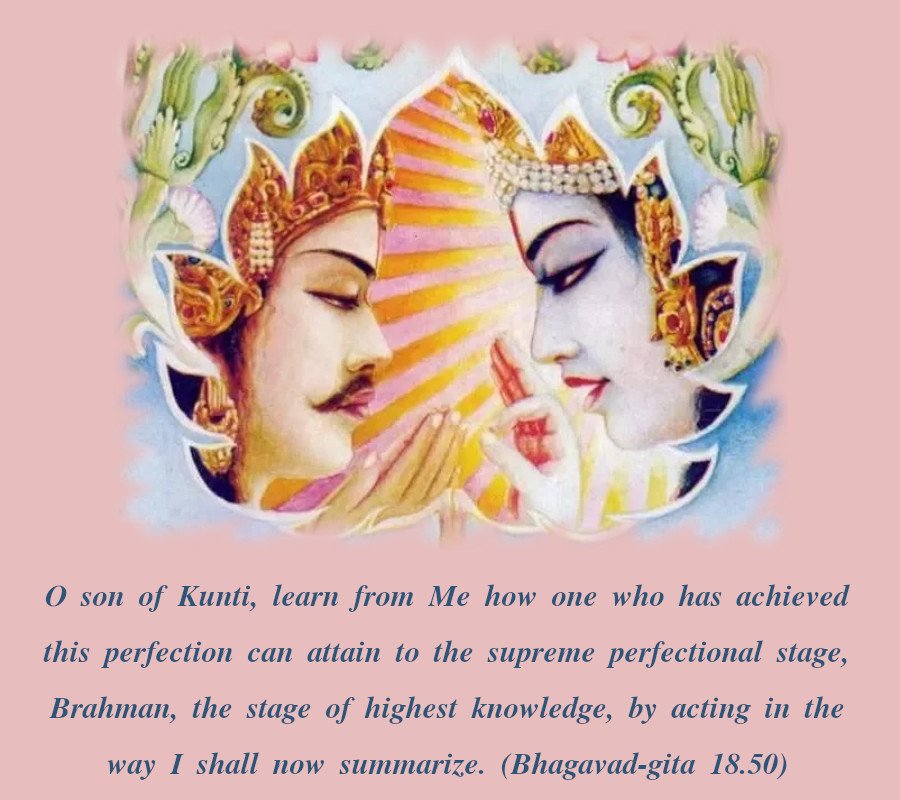सिद्धिं प्राप्तो यथा ब्रह्म तथाप्नोति निबोध मे |
समासेनैव कौन्तेय निष्ठा ज्ञानस्य या परा || 50||
siddhiṁ prāpto yathā brahma tathāpnoti nibodha me
samāsenaiva kaunteya niṣhṭhā jñānasya yā parā
siddhim—perfection; prāptaḥ—attained; yathā—how; brahma—Brahman; tathā—also; āpnoti—attain; nibodha—hear; me—from me; samāsena—briefly; eva—indeed; kaunteya—Arjun, the son of Kunti; niṣhṭhā—firmly fixed; jñānasya—of knowledge; yā—which; parā—transcendental
Translation:
O Arjuna! learn from Me in brief how reaching perfection in action, man attains Brahman, the consummation of supreme knowledge.
Commentary:
This is the closing part of the Gita in which the Lord states in clear terms the method and goal of supreme knowledge. The seekers should go through this part most carefully as the essence of the Gita is given here.
Samaseniva: The brevity of the Lord’s declaration shows that. He is summing up his teaching so far given in the elaborate and explanatory form. The seeker indeed wants to know in a nutshell, the sum and substance of the Lord’s teaching. The formula of supreme knowledge is found in the following three verses. And so, they are spoken of as Samkshipta Gita.
Bhagavad Gita: Chapter 18 🔻 (78 Verses)
| 01 | 02 | 03 | 04 | 05 | 06 | 07 | 08 | 09 | 10 |
| 11 | 12 | 13 | 14 | 15 | 16 | 17 | 18 | 19 | 20 |
| 21 | 22 | 23 | 24 | 25 | 26 | 27 | 28 | 29 | 30 |
| 31 | 32 | 33 | 34 | 35 | 36 | 37 | 38 | 39 | 40 |
| 41 | 42 | 43 | 44 | 45 | 46 | 47 | 48 | 49 | 50 |
| 51 | 52 | 53 | 54 | 55 | 56 | 57 | 58 | 59 | 60 |
| 61 | 62 | 63 | 64 | 65 | 66 | 67 | 68 | 69 | 70 |
| 71 | 72 | 73 | 74 | 75 | 76 | 77 | 78 |
